Exploring how nature shapes our lives with a group of North East asylum seekers and refugees
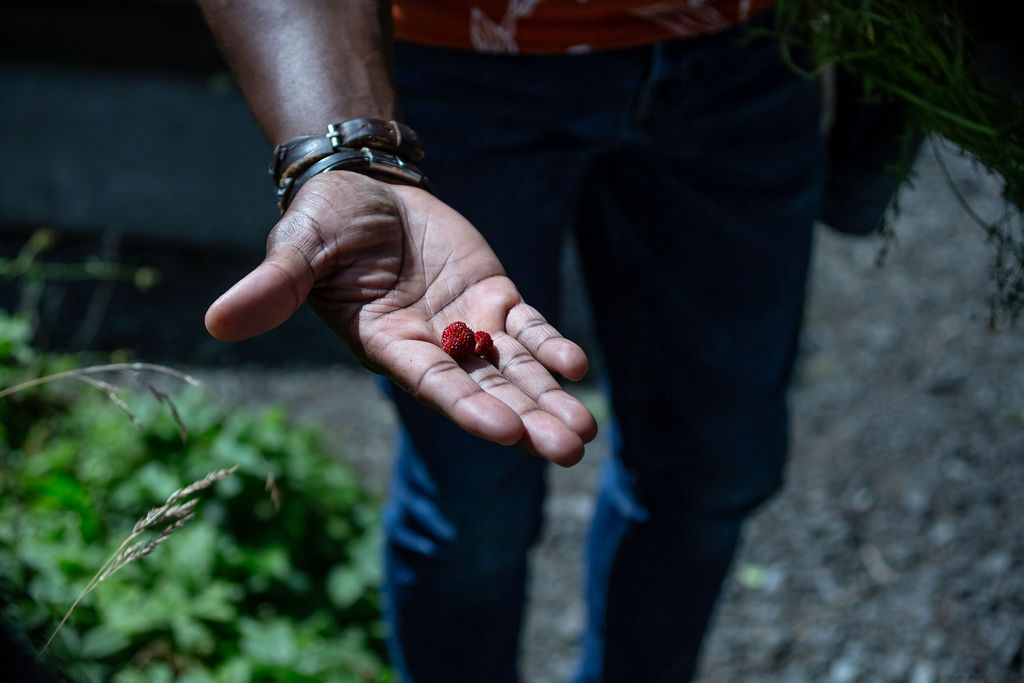
As part of our Nature’s Cure project, we’ve been working with local communities to understand what nature means in the lives of the people of the North East, whoever they are and wherever they’re from.
Recently we brought a diverse group of people, all of whom have experience of the UK asylum and border system, to Gosforth Nature Reserve. Working with local artist Henna Asikainen and sound recordist Usue Ruiz Arana, we thought about how participants’ experience of nature fitted into their lives and their experiences of displacement and migration.
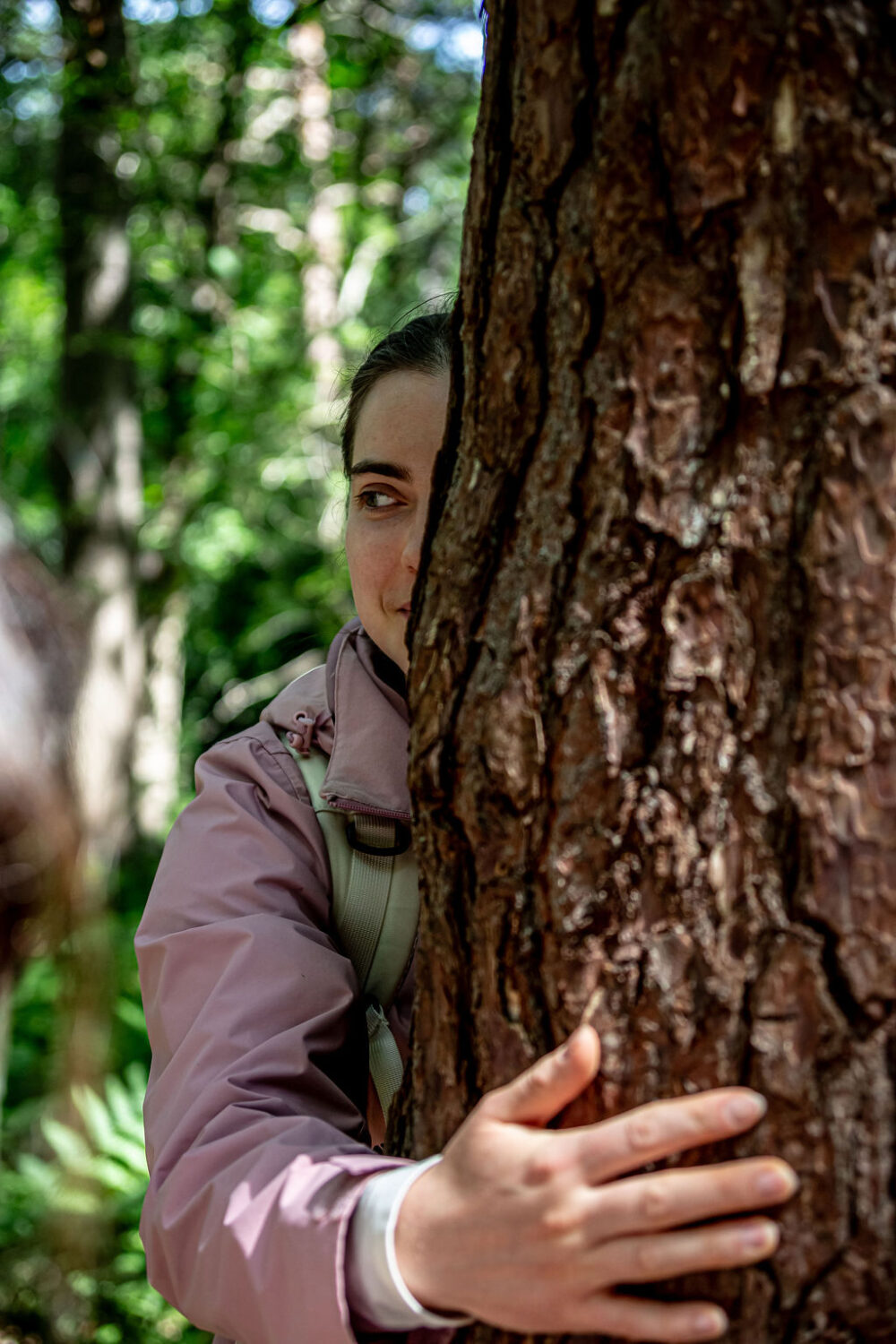
We spent a pleasant few hours being guided around the reserve by volunteer education ranger Julian Thomas, learning about the hidden worlds of the reserve’s woodland biome. Julian is a fascinating guide, with a deep knowledge of woodland ecosystems and an intimate connection to the reserve: at one point he stopped to introduce us to his favourite log. We saw badger latrines and the marks of different animals, and learned about the vast network of fungi that knits the forest together beneath the ground: if all the fungi in the reserve were to be collected in one place, Julian told us, the compacted mass would be larger than our field study building.
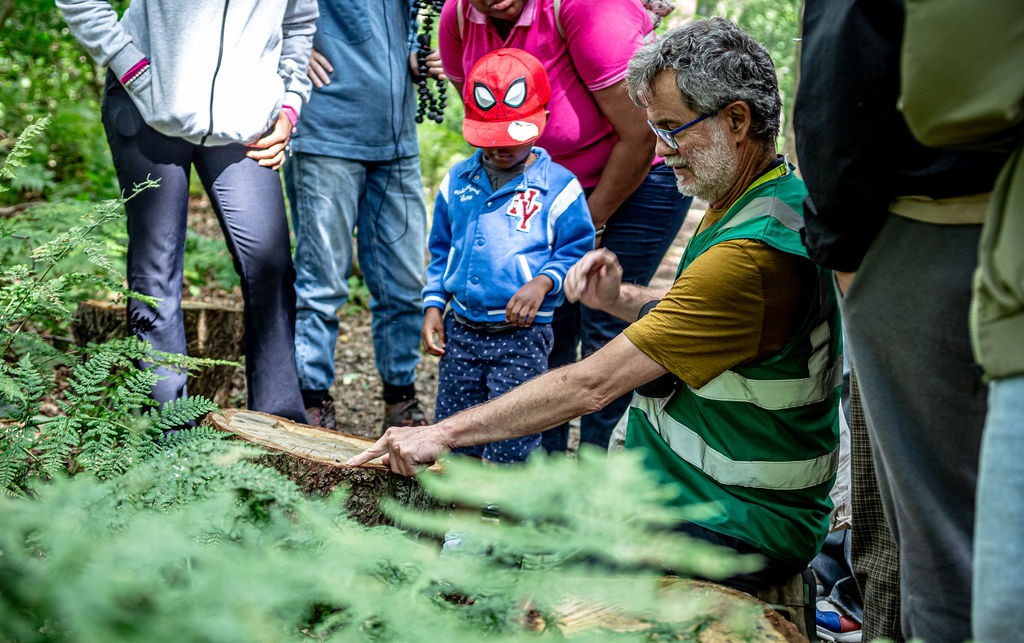
Midway through the walk, Usue stopped and attached a contact mic to the trunk of a Rowan tree. Listening through headphones, everyone got to listen to the sounds of the tree’s insides. Here was the sound-world behind the apparent quiet of the forest, just like the fungal networks that tie it invisibly together: a sucking and clattering of sap, a flexing of fibres, a background of knocks and rustles near and far, and the voices of the people stood around as heard from inside the tree. I was reminded of the line from Middlemarch: “[i]f we had a keen vision and feeling of all ordinary human life, it would be like hearing the grass grow and the squirrel’s heart beat, and we should die of that roar which lies on the other side of silence.”
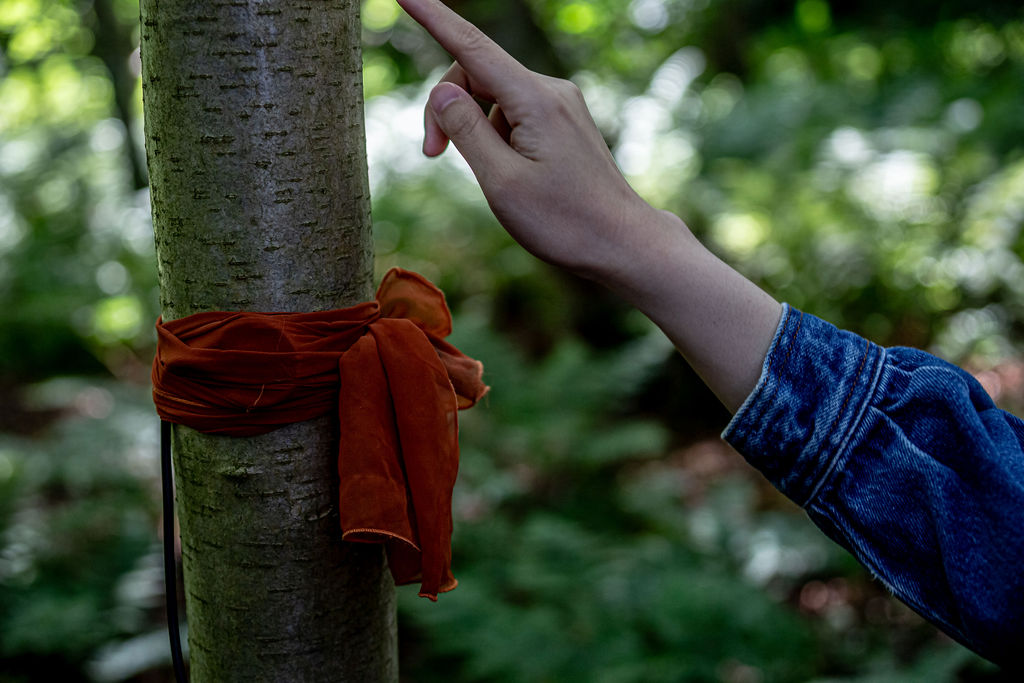
Up at the lake, we stopped in the Ridley Hide to look out over the water and the Common Tern platform. Outside, Usue recorded the sound of the wind in the reeds.
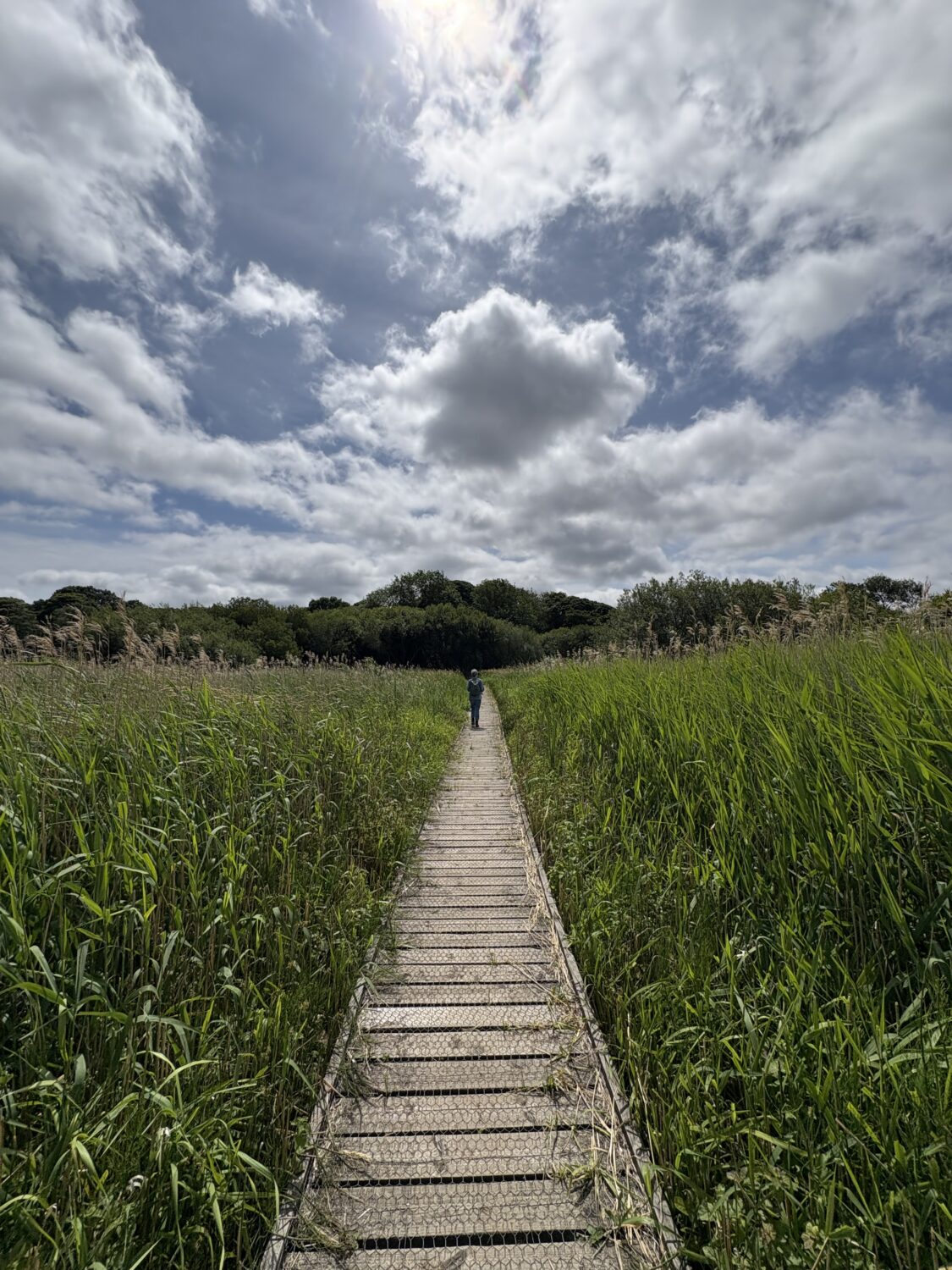
We ended the day with lunch and some audio interviews. Reflecting on the day, our participants talked about the contrast between nature as they know it in their home countries and nature in the North East; about the sustenance and safety they can find in it; and about the surprises of looking closer with the aid of a guide. Here are some of their reflections.
“It’s quite touching, when you get the impressions from the expert, all the animals and the trees and, you know, everything like that. I like the sound. I like the cool weather.”
“I feel I can open up to nature. Nature is a good listener, and people can talk”
“It’s like seeing the door of a hidden world, that I’ve never paid attention to before.”
“I used to feel sad when I saw a tree fall down, but now I know it can be a nest for little animals.”
“I now realise how much I miss going outside and I want to get that part back of me.”
“I feel safe amongst trees. Something about being covered and the peace. It’s like a community of people surrounding you. … it’s important to me to feel safe.”
“I love the fact that nature touches all your senses, your sight your smell, it just catches it all, and that’s where healing comes in when you’re in the nature, under the trees or within the trees, you see the water and how they speak to you, when the wind blows, the different sounds that come from the trees, I never dreamed that trees could speak, it’s a language that is so soothing to the soul, you don’t have to wonder what is being said, you can feel it, you can hear it with your soul, no just your physical ear.”
“We are in a circle. If we look after our nature, nature will look after us one day.”
